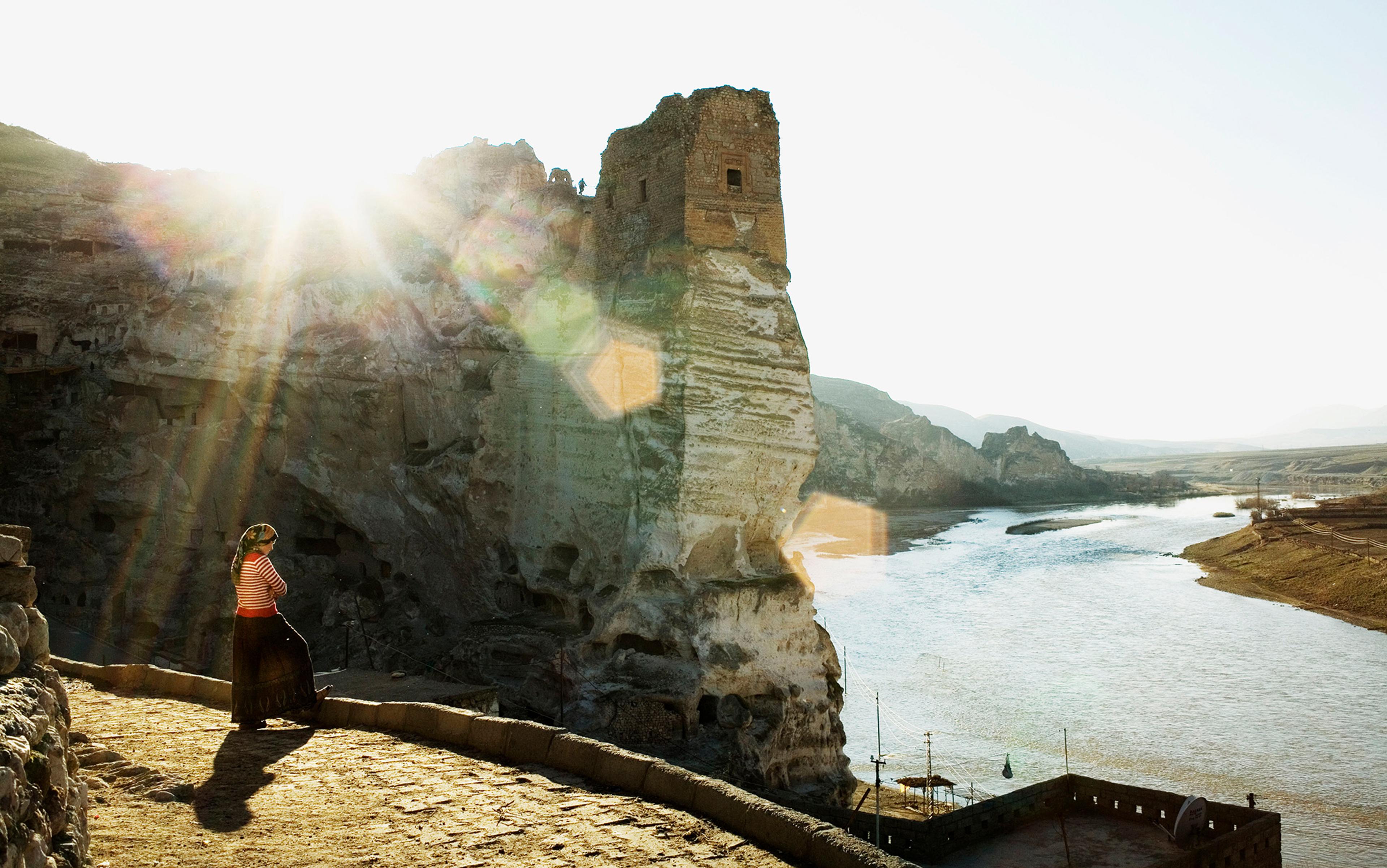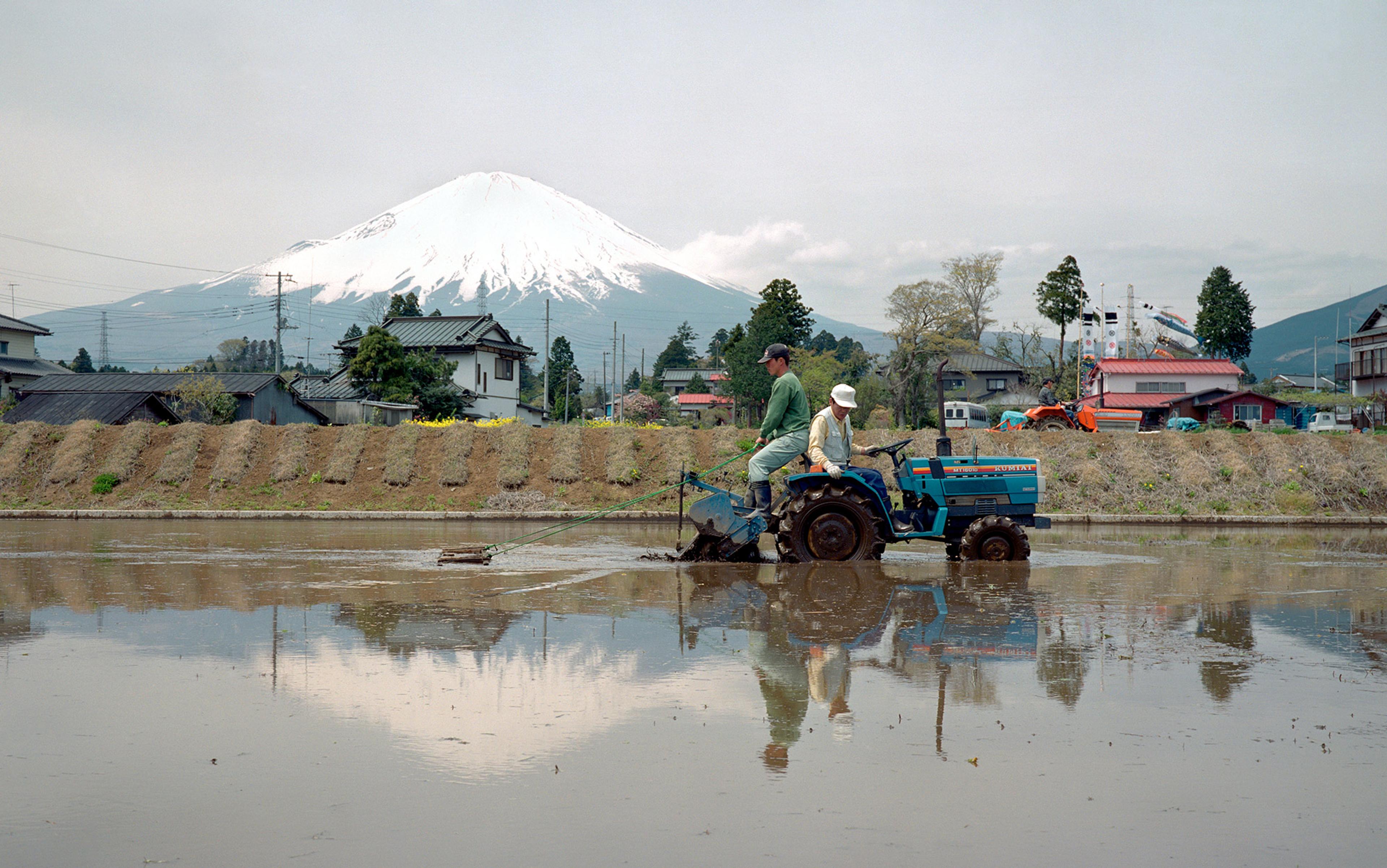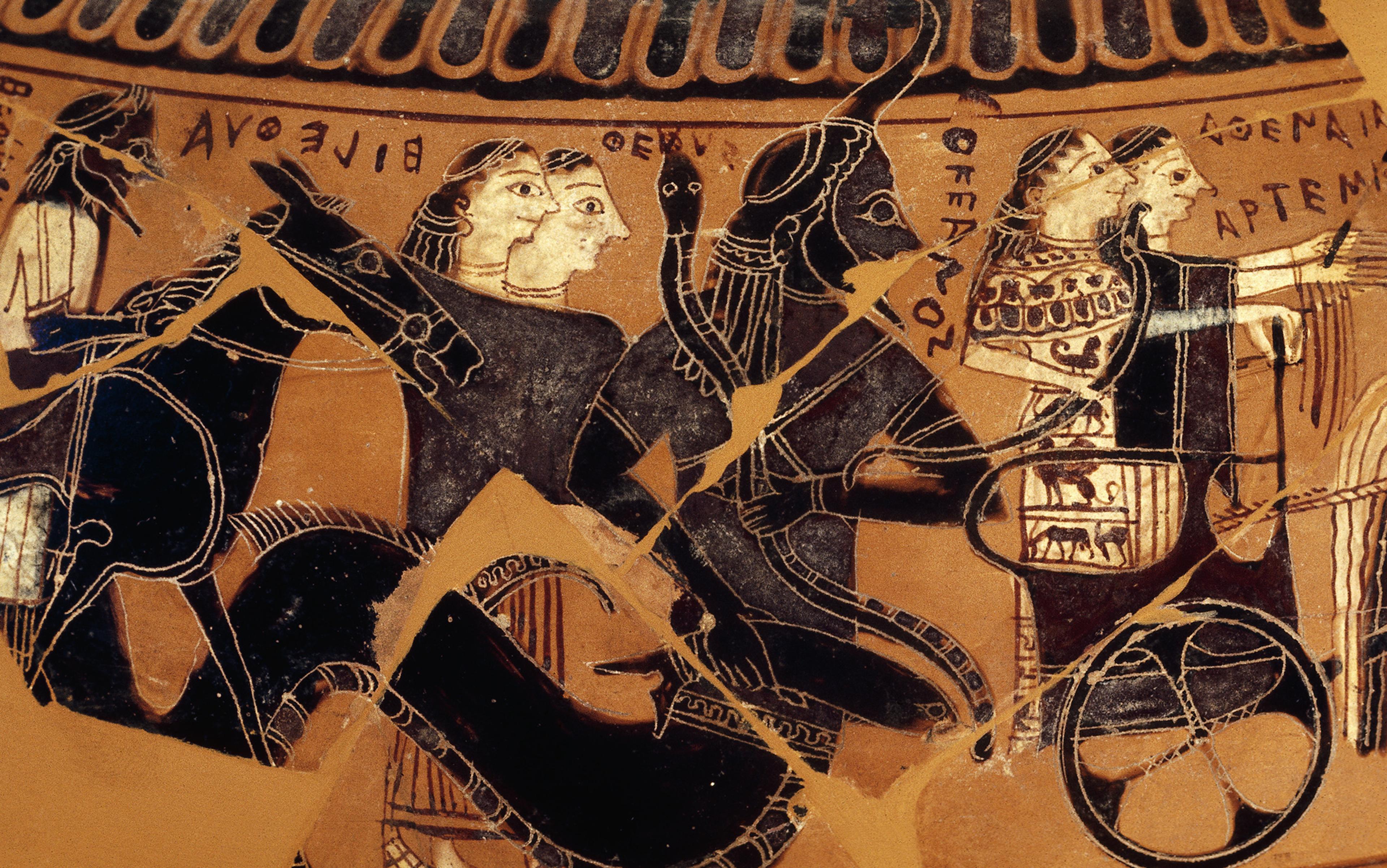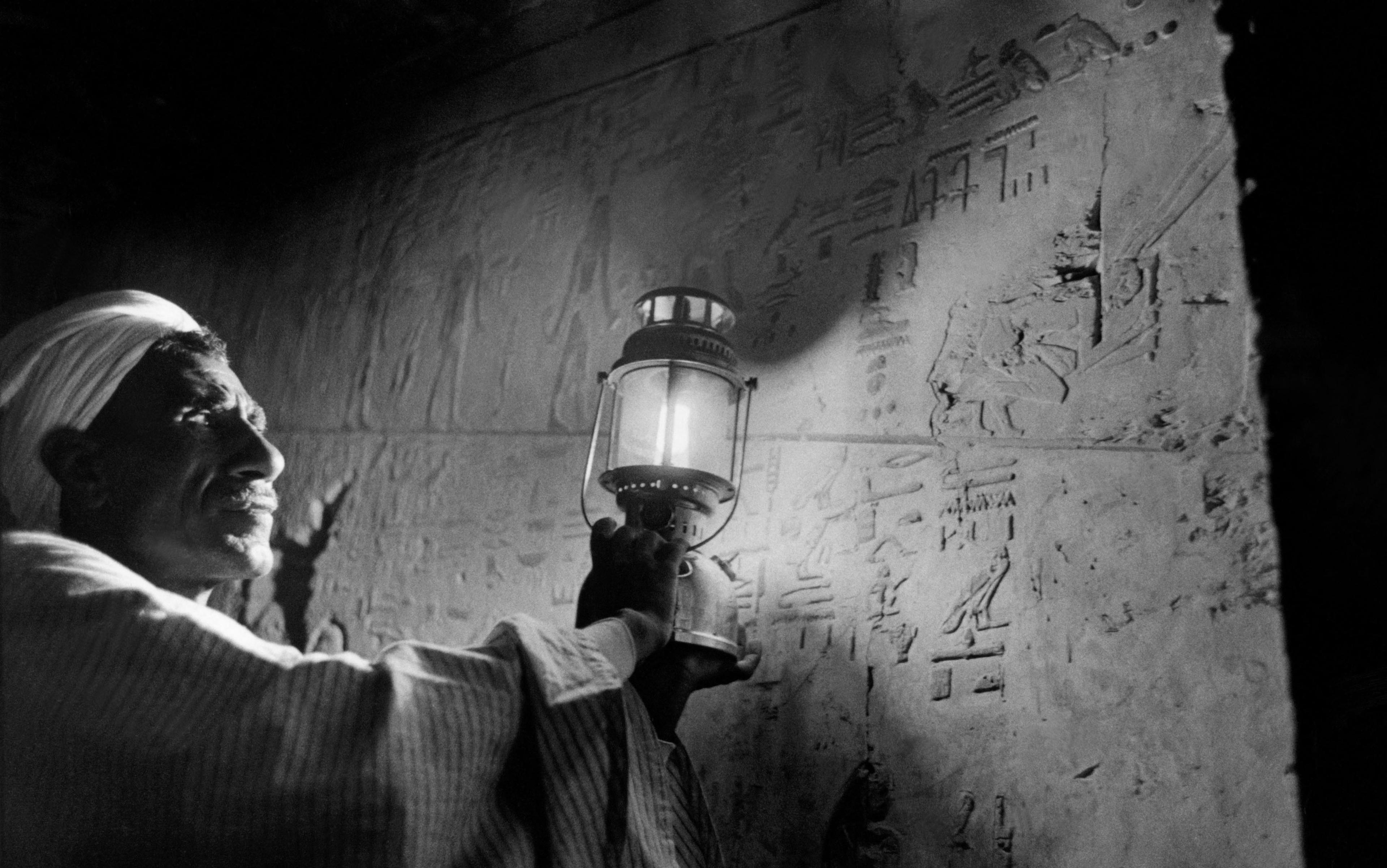A great river encircles the world. It rises in the heartland of the United States and carries more water than the Mississippi and Yangtze rivers combined. One branch, its oldest, streams over the Atlantic, heading for Europe and the Middle East. Another crosses the Pacific, flowing towards China. Countless tributaries join along the way, draining the plains and forests of Latin America, Europe and Asia.
You probably have never heard of such a river, even though almost all of us draw from it. You cannot fish in it, float on it, drink from it. If you were to look, you would not find it: it is invisible. Yet there is no doubt that it flows.
The river starts anywhere water feeds agriculture. But from there, physical water vanishes, replaced by a flow of crops that carry only the memory of the water used to produce them. Crops then travel along the shipping lanes of the global trade system, eventually displacing the water that would have otherwise been used to grow them locally. Thus, water flows from source to destination ‘embedded’ in its products. It is a flow of ‘virtual water’, an idea first developed in the 1980s by the late geographer Tony Allan.
This great virtual river helps explain how nations exercise power over each other. It is far from a coincidence that its dominant source today is the waters of the Mississippi. Its current path was established when Franklin Roosevelt’s US replaced Britain as the world’s hegemon. The US began feeding an imploding, war-torn Europe with crops nourished by the rich waters of Old Man River, and the rest is history.
In 1947, Thomas Hart Benton painted a celebrated allegory of this transition, Achelous and Hercules: a youthful US Army Corp of Engineers, cast in the role of Hercules, fights the Missouri River – Achelous, the river god, in the shape of a bull – while the Midwestern farmland fills a proleptic Cornucopia with food headed east. The US had become the postwar granary of the world.

Achelous and Hercules (1947), by Thomas Hart Benton. Courtesy the Smithsonian American Art Museum
Benton’s geopolitical reference in Ovid’s myth might seem obscure today. But he could be confident that, when the average customer of Harzfeld’s store in Kansas City glanced at that mural above the elevators, near the perfumery section – the location of the original commission – she would have recognised the elemental nature of water, the struggle that shaped the rural landscape of the 1940s, and the power that water control gave to the nation.
Streams of power and identity run deep in the waters of the great virtual river.
All through the 20th century, trading the products of a country’s water resources was an act of power. When the US became the granary of the world, flooding food eastward, it also provoked a countercurrent of hard currency streaming back to pay for it, setting the stage for the Bretton Woods settlement.
Lenin and Stalin paid for Soviet industrialisation with cereal production of Ukrainian, Russian and Central Asian fields, irrigated by canals built by thousands of Gulag prisoners. In China, Mao may well have measured the targets of the Great Leap Forward in tons of steel, but planned to fund their pursuit by irrigating the plains of the Yangtze and Yellow rivers.
Ibn Saud knew that oil might make him wealthy, but only water to irrigate Saudi Arabia would give him power, so the former paid for the latter. And the 1970s postcolonial competition for regional influence over water reached a peak when the pan-Arabism of Egypt’s president Gamal Abdel Nasser collided with Israel’s claims over the Jordan River, seeding conflicts that – from the Arab Spring to the Syrian crisis – have contributed to shaping the contemporary world.
Yet the geopolitical value of water ended up hidden from view. A thick layer of 20th-century industrialisation concealed the force of water behind countless dams and vast embankments, replumbing the planet and fooling people into believing that modernity had emancipated their life from concerns about water.
Its roots reach back to the dawn of history, a bridge between past and present we still stand on today
It was a dangerous illusion. Industrialisation did not emancipate nations from the huge system of water embedded in global trade: it built on it. The recent trade war between China and the US – ostensibly about intellectual property, from solar panels and flat-screen televisions to telecommunications technology – focused a good part of the action (and much of the rhetoric) on soybean, the largest US crop export to China and a central product of the Mississippi-Missouri valley. Behind the scenes, water and the great river continue to matter.
But where does this deep nexus between geopolitics and water come from? The answer lies in the past, in a particular story of water and empire that predates the so-called ‘American Century’. Its roots reach back to the dawn of history, a bridge between past and present so secure that we all still stand on it today, while the great virtual river, unseen, streams under us.
Over the course of the 19th century, the British Empire introduced the blueprint of the globalised world we still inhabit. The planet is littered with the consequences of this vast experiment in conquest, from the conflicts of the Middle East and Afghanistan to the postcolonial struggles of Africa and the Indian subcontinent.
While most contemporary talk of empire echoes that age, the British were far less sanguine about their imperial dreams than the lyrics of ‘Rule, Britannia!’ might suggest. A deep anxiety gnawed at the brittle foundations of their identity. They fashioned themselves as rightful heirs of Rome, yet could not escape the cautionary tale of The History of the Decline and Fall of the Roman Empire (1776-89) by Edward Gibbons. Was decline and fall their destiny too?
Assuaging this anxiety required digging deeper roots. For a self-identified pious society in the throes of the Darwinian revolution, the ancient past was the principal source of comfort. The archaeologists of the 19th century were in the business of biblical confirmation: searching for evidence of Old Testament stories. Finding them would prove that the British were blessed with Augustinian universality: a Christian commonwealth, filled with purpose and piety, which marked the terminus of a human story that began with Noah’s flood.
So, the spades of archaeologists began digging. The Near East, the theatre of the biblical text, was their target. As they dug through sand, rock and time, they found water.
On 3 December 1872, London was overcast. A 150-year-old weather report from that Tuesday describes a foggy morning, followed by rain. By close of day, a northerly cold wind had partly cleared the clouds. The next day would be freezing.
That evening, at the Society for Biblical Archaeology on 9 Conduit Street, George Smith, a 32-year-old bearded Assyriologist, prepared to speak, paper in hand. Expectations were high. The Daily Telegraph had printed a preview of his findings two weeks earlier. As a result, the room was packed. William Gladstone, the then prime minister, had chosen to attend.
Chairing was Major General Sir Henry Rawlinson, the British Museum supervisor in charge of the Mesopotamian excavations at Nineveh and Babylon. Years earlier in the Kurdish mountains, Rawlinson had deciphered the rock of Behistun, producing a Rosetta stone of cuneiform language. Access to Near East history had snowballed after that. With it, the search for imperial identity. Rawlinson sponsored the retrieval of thousands of artefacts, filling the halls of the British Museum. A team led by Hormuzd Rassam, an Iraqi-British archaeologist, retrieved more than 20,000 fragmented tablets from the ancient library of Ashurbanipal in Nineveh.
Assyrian objects flooded Britain, and London found itself in the grip of an Assyrian craze. However, finding those tablets and getting them to London had been far easier than making sense of them. Desperate for manpower, Rawlinson hired Smith, the Assyriologist now standing in front of the audience in Conduit Street.
Utnapishtim had been instructed by a god to build a vessel to escape a destructive flood
A child of a working-class Chelsea family, Smith had left school at 14 to apprentice in a publishing house, and would not have made an obvious choice for an Assyriologist. But early in life he had developed a passion for biblical history. Time in the British Museum turned a fascination for cuneiform writing into a singular proficiency for translation.
By November 1872, he had been labouring under contract for 10 years, tirelessly examining fragments from the prodigious catalogue of tablets. He was looking for myths. Then, finally, he assembled 80 fragments to form a single epic on 12 tablets. He had struck gold.
The protagonist of Smith’s epic was King Gilgamesh, builder of the great walls of Uruk, the 4th-millennium BCE city-state of Sumer. He was accompanied by Enkidu, a wild man created by the gods. The 11th tablet in their story made history. Standing in front of the prime minister, Smith began reading: ‘A short time back I discovered among the Assyrian tablets in the British Museum, an account of the flood.’ His paper was titled ‘The Chaldean Account of the Deluge’.
The tablet described how Gilgamesh, distraught by the death of Enkidu, set out to find Utnapishtim, ‘the faraway’, to learn the secret of immortality. Utnapishtim told Gilgamesh the most extraordinary story: of how he had been instructed by a god to build a vessel to escape a destructive flood, and that he had been given a mandate to save himself and his animals. He floated endlessly, even sending out a dove to seek land. Eventually, he landed on mount Urartu as the floodwaters drained away.
The tale of Utnapishtim thrilled and astonished Smith’s listeners. It was Noah’s story of the flood from the Old Testament. But, according to Smith, the text had been written well before 1700 BCE, or 1,000 years before the writing of the Bible. The revelation of biblical confirmation hit London’s elite like a thunderbolt. The British had succeeded: to many, this was proof that the biblical text was recording real events. A deluge, in fact.
Intolerable amounts of water would have struck a familiar note with Smith’s Victorian audience. Most British wealth still belonged to landed aristocracy and, although industrialisation had moved more people off farms than in any other country, the first sector still employed a quarter of the British labour force.
The 1870s had been the wettest years since records began – in 1872 alone, more than a metre of rain had drenched England – and all cereal-producing regions were hit. Besides, surrounded by an overpopulated 19th-century London, with cholera outbreaks and an open sewer for the Thames, the stories of ancient people struggling with water would have been more than evocative.
Not only did the British think they had physically confirmed the Word of God, providing them with an extraordinary claim to universality, they had discovered the traces of an ancient empire whose roots, like theirs, were planted in water. The fate of the British Empire felt inescapably connected to its relationship to water.
Smith was not done yet. The Victorian world was so spellbound by his revelations, that he was able to persuade the editor of The Daily Telegraph to finance a new expedition. In January 1873, Smith set off again for Nineveh. By May, he was digging. Almost immediately, he hit on fragments of another epic, the even more ancient Atrahasis.
In the world of Atrahasis, one with no humans, gods were organised in a hierarchy. Lesser gods were forced to maintain canals under the guidance of the god Ennugi, the canals controller. Eventually, the gods tired of having to do all the work, and created man to do the digging for them. In Mesopotamian myth, human beings existed to manage irrigation. People existed to struggle with water.
Water was no longer just nourishment for agriculture, but also the principal infrastructure of empire
Such myths reflected the experience of Mesopotamia, where the sedentary model of the Fertile Crescent during the Neolithic exploded in southern Mesopotamia, around the 5th millennium BCE, into a more mobile state of affairs. Societies living at the boundary of the Euphrates River and the Persian Gulf engaged in intensive food production to support remarkably complex institutions. Rivers were the heart of their story.
The flood regime of the Tigris and Euphrates depends on snowmelt from the Taurus and Zagros mountains. It made life very difficult for early Mesopotamian settlers. Floodwaters reached the fields at harvesting, the wrong time, requiring a complex system of canals and moveable dams to manage them. To mobilise the unpaid labour needed to operate this complicated system, the communities of the Uruk period had to rely on concentrated power, embodied by permanent theocratic hierarchies. The first city-states had emerged.
As cities along the rivers grew, occupying more of the linear embankments, they encroached on each other’s territory, entering into conflict. Eventually, they accreted into the first empire, Akkad. And, with this, water was no longer just nourishment for agriculture, but also the principal infrastructure joining together an empire. The story of Gilgamesh had first been written in Akkadian.
Over time, many Bronze Age civilisations developed – most of them did so by harnessing their water resources – until a system of trade emerged that included Assyrians, Hittites, Mycenaeans, Egyptians and more. Their trade included crops. We know this, because records have survived of the Hittite King pleading for emergency food shipments from his arch-nemesis, the Pharaoh of Egypt, when drought hit.
Smith and the 19th-century archaeologists he worked with would never have described it in these terms, of course, but they had contributed to revealing the first virtual river in history. The story of empire was inseparable from the story of water.
Nineteenth-century exploration of the deep past accompanied a transformation of the present. In 1858, after the East India Company had spent decades exploiting the textile industry of Bengal, rule of India passed to the British Raj. From then on, the British concentrated their imperial aspirations on irrigated agriculture in India.
That year, Rawlinson joined parliament and the newly formed India Council. The likes of Rawlinson feared Russia’s imperial ambitions for India, which, through Afghanistan, would have entered the subcontinent via the floodplains of the Indus.
In his treatise on The Wealth of Nations (1776), Adam Smith had posited that the relative success of states depended on the reach of their fluvial system, which – he thought – defined both size of markets and complexity of division of labour. He believed that ancient Egypt, China and India had been long-lasting societies in their time because of their vast, indigenous fluvial networks. Not surprisingly, the British invested accordingly.
Capital from London underwrote canals on the Indus to improve the connectivity and productivity of Punjabi farms. The scale of investment – particularly after the American Civil War broke out, closing off westward finance – was astonishing. In 1800, about 800,000 hectares were under irrigation in India. By 1900, they had grown to 13 million.
The title ‘Empress of India’ crystallised the source of the great river at the heart of the empire
Indian irrigated production became the heart of the imperial system of trade. The plains of India produced raw materials, sold to the rest of the world to balance the import of goods to England. In particular, China’s purchases of Indian opium balanced the extraordinary quantities of tea that Britain imported from the Celestial Empire, a trade perceived to be important enough to justify two Opium Wars. In their pursuit of an odd mix of liberalism and imperialism, the British had knitted together a vast system of trade that fed a 19th-century virtual river, the first truly global one in history.
Smith, meanwhile, went back for two more rounds of excavations in 1874 and 1876. His last trip was in July 1876, just a few months after Benjamin Disraeli had convinced parliament to bestow on Queen Victoria the title of ‘Empress of India’, crystallising the source of the great river at the heart of the empire.
He would never see England again. Smith fell ill and died in Aleppo. He was 36. The stories of Gilgamesh and Atrahasis – myths that contributed to feeding a water-led view of power that persists to this day – were his legacy.
Finally, at the beginning of the 20th century, the British Empire met the destiny it was trying to avoid. Finding identity in the deep past did nothing to compensate for flawed economics, poor management and global conflicts. It declined and, effectively, fell a few decades into the 20th century. But the great virtual flow it had established did not dry up with it. It moved.
Only half a century earlier, the American Republic had been a radical project on the verge of collapse in a bloody civil war. After the First World War, however, it took the mantle of global leader, first by exporting its agricultural products to Europe, then by exporting something else: a water-led modernist model of development that had begun with engineering the Panama Canal and was trained in the harsh conditions of the American West.
Karl Marx believed that material conditions determined political outcomes. He thought that difficult water conditions would necessarily give rise to a despotic managerial state, such as that in Qing China. But during the 20th century, countries around the world replumbed their landscape on the model not of a despot, but of the world’s largest democratic republic.
The archetypes of the US model – Hoover Dam, the Tennessee Valley Authority, countless other projects of the Bureau of Reclamation and the US Army Corp of Engineers – inspired the world to replumb their land to harness the power of water, protect industrialisation from its force, and increase agricultural production through irrigation.
Whether seen or not, the deep connection between water and global trade had been permanently set
The improvements in water infrastructure augmented the capacity of countries. Food production grew. Globalisation intensified. When oil extraction expanded, a vast flow of crude headed west to power the postwar US and European economies, while food flowed towards the Middle East and North Africa. Food, energy and water became entangled in a tightening nexus. The great virtual river swelled.
Then, Deng Xiaoping untethered China from the Soviet Union and hooked it to US demand for products instead. Drunk with consumption, people began believing that the modernist model of the 20th century was a thing of the past. State-led engineering of the US water landscape had run out of steam, as the country’s public – tired of large government programmes – had turned decisively to market institutions.
Most people forgot the great river. If Benton had painted Achelous and Hercules today, his allegory would have been missed by the average customer of Macy’s or Walmart. But whether seen or not, the deep connection between water and global trade had been permanently set.
The drying of the Colorado River, the decimation of the forests of the Amazon and Congo basins, the flood-ridden plains of the Rhine and Yellow rivers, the disappearing wetlands of the Murray-Darling River are all evidence that a vast agricultural trade system continues to transform the face of the planet. And water continues to be its blueprint.
You cannot see the great virtual river, even if it continues to grow. But, unseen, it still matters. It shapes the environment we all live in. It creates powerful dependencies between nations. Above all, it is an expression of power. You might not be able to see it, but its shadow stretches behind you in time.
Just over 100 years after George Smith’s death, new lines were found on a fragment in Me-Turan, a new finale to the Epic of Gilgamesh. In them, the waters of the mighty Euphrates opened up, and the people of Uruk built a great stone tomb in the riverbed, to put their king to rest. As they sealed the tomb, waters flowed back, covering it forever. From then on, everyone knew Gilgamesh’s tomb was there. But no one could see it, under the surface of the water.






